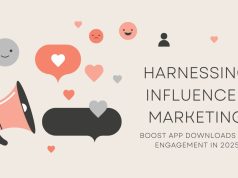In the crowded world of mobile applications, having a great product is only half the battle. The other half is ensuring your target audience knows it exists and is motivated to download and engage with it. In this comprehensive guide, we explore ten proven strategies that will help you boost visibility, user acquisition, retention, and revenue throughout 2025. Whether you are launching your first app or looking to scale an existing one, these actionable tactics will elevate your marketing efforts and drive sustainable growth.
1. Optimize for App Stores (ASO)
App Store Optimization remains the cornerstone of organic discoverability. Conduct keyword research to identify high-traffic search terms in the App Store and Google Play. Incorporate these terms into your app title, subtitle, and description without overstuffing. Use compelling screenshots and an attention-grabbing icon that clearly communicate your app’s value proposition. Regularly A B test your creatives and metadata to improve your conversion rate from store view to download.

2. Leverage Influencer Partnerships
Influencer marketing is not just for consumer brands—mobile apps can benefit greatly as well. Identify micro and macro influencers in your niche whose followers match your target demographic. Collaborate on authentic content such as tutorials, reviews, and challenges that highlight your app’s unique features. Offering exclusive in-app rewards or referral codes can further incentivize influencers to drive installs and engagement among their audience.
3. Create Valuable Content
A robust content marketing strategy builds authority and keeps users engaged. Maintain a blog that addresses common pain points, how-to guides, industry trends, and case studies related to your app’s domain. Optimize blog articles for SEO by targeting long-tail keywords and answering user queries. Distribute content through your email newsletter and social channels to drive traffic back to your app download page.

4. Invest in Paid User Acquisition
Paid advertising remains one of the fastest ways to scale installs. Allocate budget across channels like Facebook Ads, Google UAC, Apple Search Ads, and programmatic platforms. Use precise audience targeting and lookalike models to reach high-value users. Continuously monitor your cost per install (CPI) and lifetime value (LTV) metrics, and reallocate budget to the best performing ad sets and creatives.
5. Engage on Social Media
Social platforms are ideal for building community and driving word of mouth. Share interactive content such as polls, stories, reels, and live streams that demonstrate your app in action. Respond promptly to comments and direct messages to foster trust and loyalty. Consider running user-generated content contests that encourage existing users to share their experiences using your app for additional reach.
6. Build an Email Marketing Funnel
Email remains one of the highest converting channels for reengagement. Collect email addresses during onboarding, through lead magnets like ebooks, and in-app prompts. Develop a sequence of automated emails that welcome new users, highlight key features, share tips, and offer special promotions. Segment your list by behavior and lifecycle stage to deliver highly relevant messages that keep users coming back.

7. Launch a Referral Program
Word of mouth is a powerful growth engine. Implement a referral program that rewards both the referrer and the referee with in-app currency, premium features, or discounts. Make the sharing process seamless by integrating social sharing buttons and personalized invite links. Track performance and optimize incentives to maximize participation and cost-effectiveness.
8. Secure Press and PR Coverage
A well-executed PR strategy can generate significant buzz around your app launch or feature updates. Compile a targeted media list of tech bloggers, industry publications, and podcasters. Craft a compelling press release that highlights unique data, user success stories, or partnership announcements. Personalize pitches and follow up strategically to increase your chances of coverage and backlinks.
9. Prioritize Retention and Engagement
Acquiring users is only half the battle—retaining them is equally important. Use push notifications, in-app messages, and email alerts to remind users of new features, promotions, or milestones. Implement gamification elements like badges, leaderboards, and challenges to keep engagement levels high. Analyze churn patterns and survey inactive users to identify friction points and course correct.
10. Track, Analyze, and Iterate
Data-driven decision making is critical for sustained growth. Set up analytics tools such as Firebase, Mixpanel, or Appsflyer to monitor key metrics like installs, active users, retention rate, and revenue. Create custom dashboards for quick insights and schedule regular reviews with your team. Use A B tests to validate hypotheses and double down on what works while discontinuing low-performing tactics.
Conclusion
Effective app marketing in 2025 demands a holistic, multi-channel approach that balances organic optimization with paid acquisition, community building, and data-driven iteration. By implementing these ten strategies, you can elevate your app’s visibility, attract and retain high-value users, and maximize long-term revenue. Start experimenting today, measure your results, and continuously refine your tactics to stay ahead in the ever-evolving mobile ecosystem.







